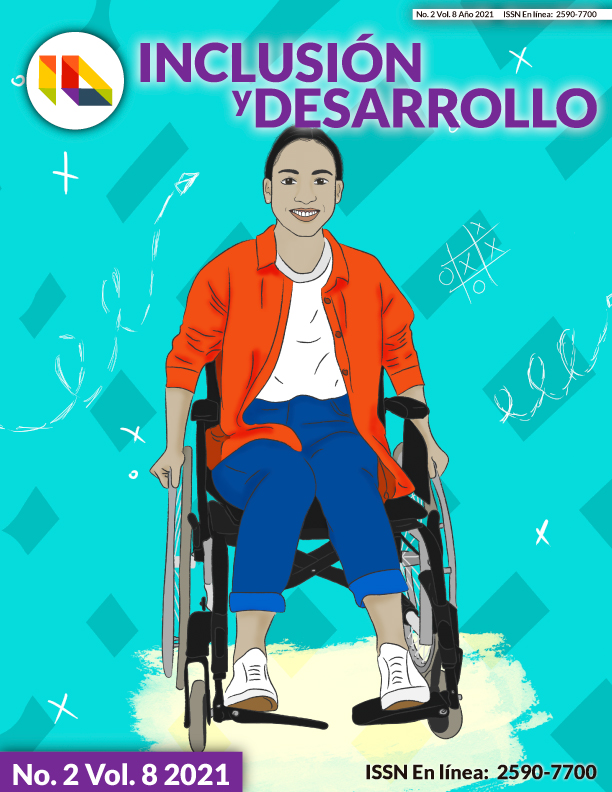Relación entre inteligencias múltiples, creatividad y desempeño académico en niños escolarizados en Barranquilla, Atlántico
Contenido principal del artículo
Resumen
La investigación que se presenta a continuación tiene como objetivo principal determinar y describir la correlación efectiva entre la capacidad de crear, las inteligencias múltiples y el desempeño académico en niños de primaria del Colegio Distrital San Vicente de Paul en Barranquilla, Atlántico. Para lograr el objetivo se diseñó un estudio de tipo no experimental, cuantitativo, transversal descriptivo y correlacional, en el cual se trabajó con un muestreo a conveniencia del investigador, conformada de 30 estudiantes con edades entre los 9 y 11 años que cursaban el cuarto grado de primaria; a estos se les aplicó el Cuestionario de Turtle, el Cuestionario de diagnóstico de las Inteligencias Múltiples y Certificado de notas académicas por asignatura y promedio general de Desempeño académico. Se encontró que existe correlación entre el Desempeño académico y las Inteligencias Múltiples, mas no entre Creatividad y Desempeño académico, ni entre Creatividad
e Inteligencias Múltiples. Se puede concluir que los temas de las inteligencias múltiples y la creatividad son de gran interés en el ámbito educativo; así mismo el dilucidar los factores que intervienen en la obtención de un buen desempeño académico por parte de los estudiantes es uno de los intereses principales de las instituciones educativas y docentes para contribuir
al entendimiento de las variables que aportan al desarrollo y aprendizaje escolar.
Detalles del artículo
Sección

Esta obra está bajo una licencia internacional Creative Commons Atribución 4.0.
Cómo citar
Referencias
Casado, E. (2001). Hacia una psicología de la educación. Caracas: Concejo de Desarrollo Cinetífico y Humanístico. Unviersidad Central de Venezuela.
Chacón, M. (2005). Educación física para niños con necesidades educativas especiales. Costa Rica: EUNED.
De Certein, L. (2014). Guía básica sobre educación infantil en Colombia. Universidad del Norte. Editorial Universidad del Norte.
Díaz, C., Llamas, F. y López-Fernández, V. (2016). Relación entre creatividad, inteligencias múltiples y rendimiento académico en alumnos de enseñanza media técnico profesional del área gráfica. Programa de intervención neuropsicológico utilizando las TIC. Revista Academia & Virtualidad, 9(2): 41-58.
Díaz, R. (2006). Inteligencias Múltiples: Despierte el potencial de Aprendizaje. Editorial Orbis Press.
Galera, E. (2015). Relación entre inteligencias múltiples, creatividad y proceso de aprendizaje en matemáticas para la elección de materias optativas (Trabajo de fin de máster). Universidad de la Rioja. http://reunir.unir.net/handle/123456789/2078.
Gallahue, D. y Clenaghan, B. (2001). Movimientos Fundamentales, su desarrollo y rehabilitación. London: Editorial Médica Panamericana.
García, C. (2012). Inteligencias Múltiples, Creatividad y Rendimiento Académico en Educación Secundaria. (Trabajo de fin de Máster) Universidad Internacional de la Rioja. http://reunir.unir.net/ bitstream/handle/123456789/1306/2013_01_02_TFM_ESTUDIO_DEL_TRABAJO.pdf?sequence=1.
Gardner, H. (1983). Frames of Mind. The Theory of Multiple Intelligences. Nueva York: Basic Books. (Versión castellana (2001): Estructuras de la Mente. La Teoría de las Inteligencias Múltiples. México, FCE.
Gardner, H. (2001). La inteligencia reformulada: Las Inteligencias Múltiples en el Siglo XXI. Barcelona: Paidos.
Gardner, H. (2003). Three distinct meanings of intelligence, en R. J. Sternberg, J. Lautrey y T. I. Lubart (eds.), Models of intelligence. International perspectives. Washington: American Psychological Association.
Gardner, H. (2010). Mentes Creativas. Una Anatomía de la Creatividad Humana. Barcelona: Paidós.
Ghamrawi, N., (2014). Multiple Intelligences and ESL Teaching and Learning: An Investigation in KG II Classrooms in One Private School in Beirut, Lebanon. Journal of Advanced Academics, (25), 25-46.
Guilford, G. (1980). La creatividad. Madrid: Narcea.
Guzmán, B., y Castro, S. (2005). Las inteligencias múltiples en el aula de clases. Revista de investigación, 58:177- 202.
Jiménez, M. (2000). Competencia social: intervención preventiva en la escuela. Infancia y Sociedad. 24, 21-48.
Johnson, W. (1946). People in quandaries. New York: Harper
Just, M. & Carpenter P. (1987). The psychology of Reading and language comprehension. Boston: Allyn & Bacon.
Mead, M. (1962). Creative life for your children. Washington. U.S. Gobt Printing Office.
Morgado, I. (2005). Psicobiología del aprendizaje y la memoria: fundamentos y avances recientes. Revista de Neurología, 40(5), 289-297.
Navarro, R. (2003) El proceso de aprendizaje: concepto, investigación y desarrollo. Revista Electrónica Iberoamericana sobreCalidad, Eficacia y Cambio en Educación, 1(2).
Nicolini, P., (2010). Training teachers to observation: an approach through multiple intelligences theory. Bulletin of the Transilvania University of Brasov. Series VII: Social Sciences, 52, 91-98.
Niebla, J. y Hernández, L. (2007). Variables que inciden en el proceso de aprendizaje de adolescentes mexicanos. Revista latinoamericana de psicología, 39 (003), 487 – 501.
Osborn, A. (1993). Applied imagination. Principles and procedures of creative problem solving. The Creative Education Foundation Press. Buffalo. (1ª Ed., 1953).
Parnes, S. (1992). Source book for creative problem solving. Creative Education Foundation Press. Buffalo. New York.
Pereiro, G. (2007). La evolución es creatividad. El pensamiento circular. Buenos Aires: Kier. https://books.google.es/books?id=pAg67MH42P0C&printsec=frontcover&hl=es#v=onepage&q&f=false
Prieto, M. y Ballester, P. (2003). Las inteligencias múltiples. Diferentes formas de enseñar y aprender. Madrid: Pirámide.
Rodrigo, I., Rodrigo, L. y Martín, M. (2012). Creatividad y educación. El desarrollo de la creatividad como herramienta de la transformación social. Prisma Social, 9; 311-351.
Torrance, E. (1962). Guiding creative talent. Englewood Cliffs, NJ: Prentice Hall.
Valle, A., Cabanach, R., Rodríguez, S., Núñez, J. y González, J. (2006) Metas académicas, estrategias cognitivas y estrategias de autorregulación de estudio. Psicothema, 18 (002), 165 – 170.
Wallas, G. (1926). The art of thought. Excerpts reprinted in creativity.Miilesex. England: Penguin.





